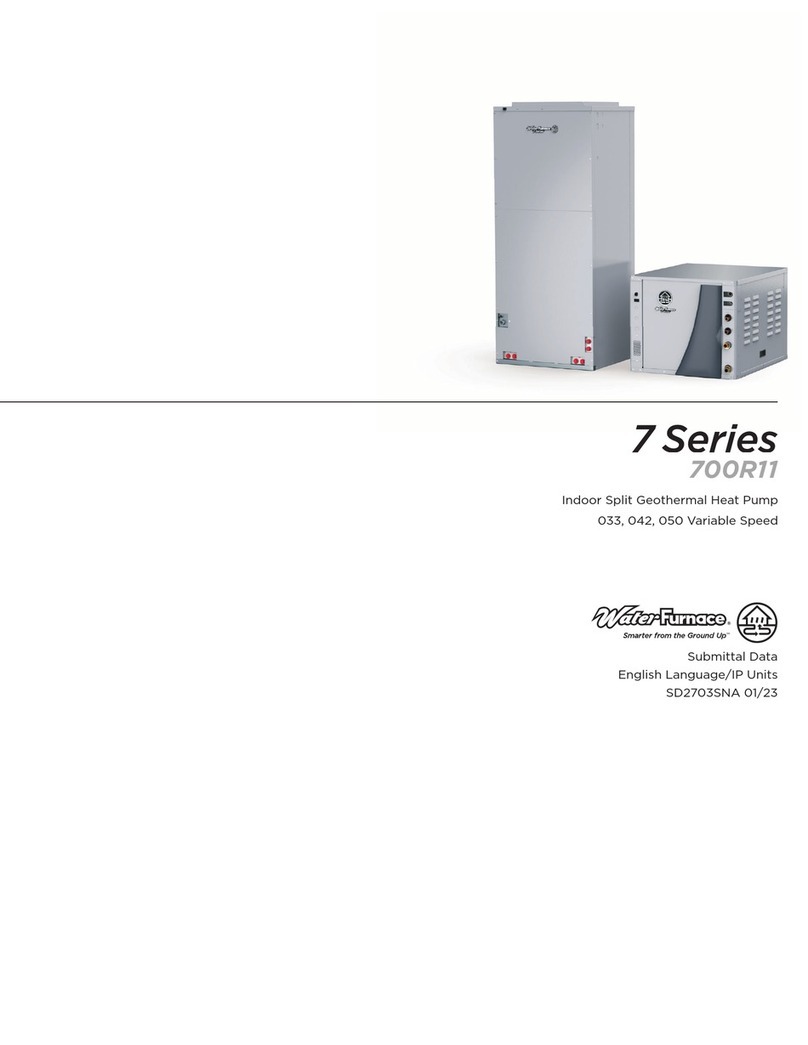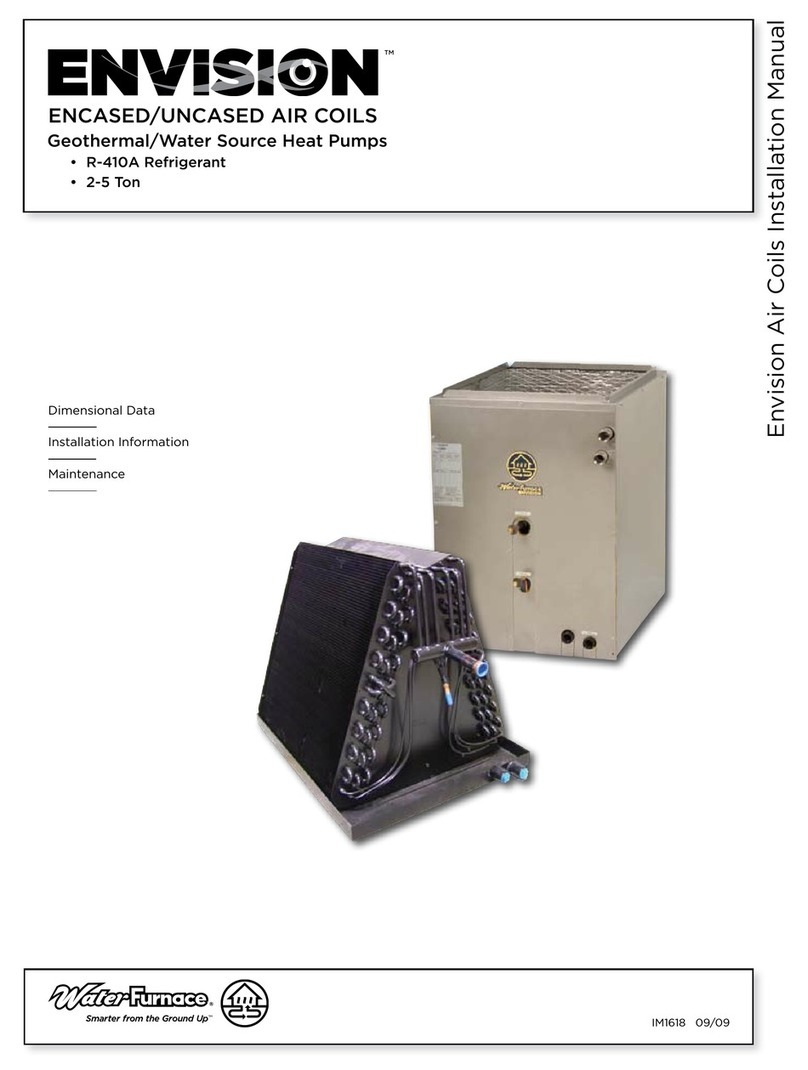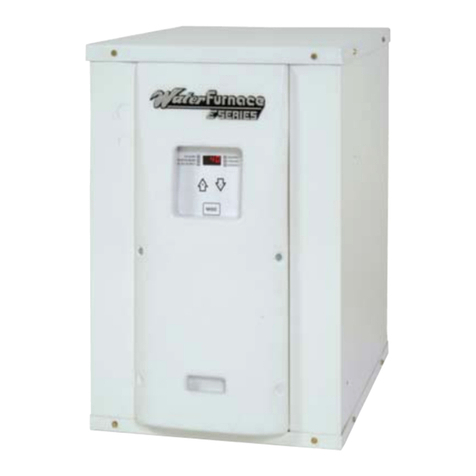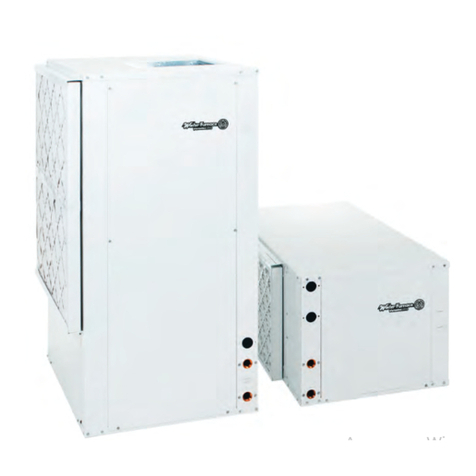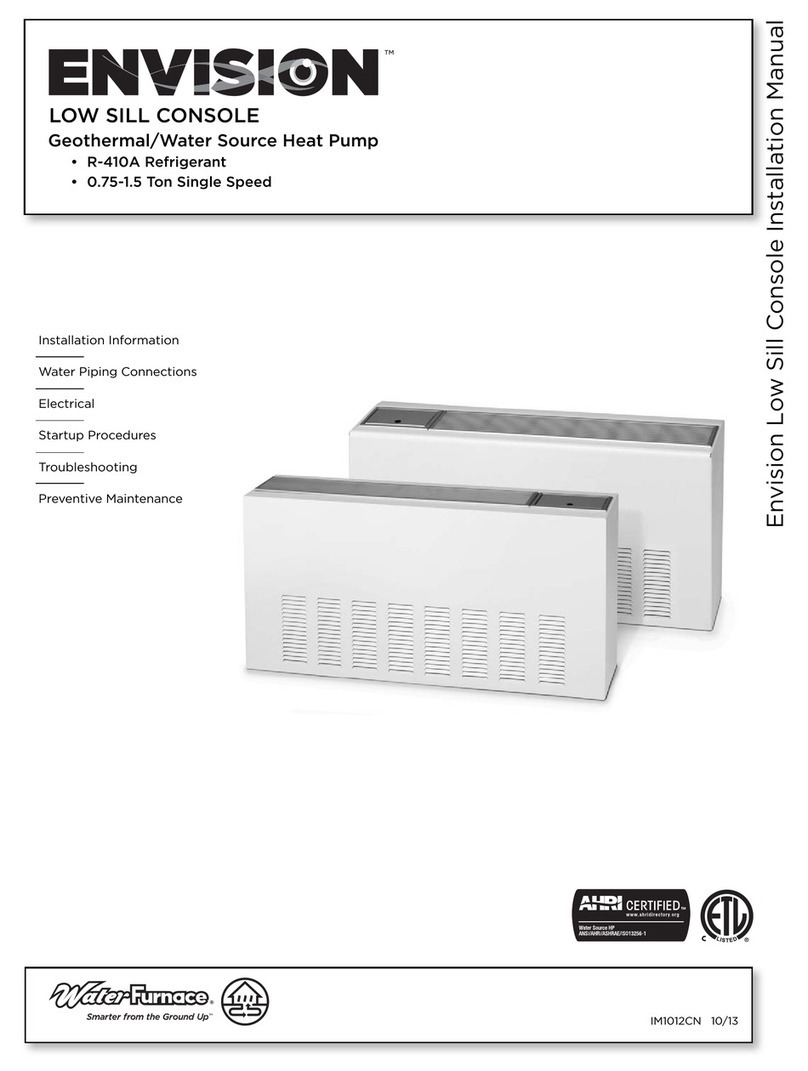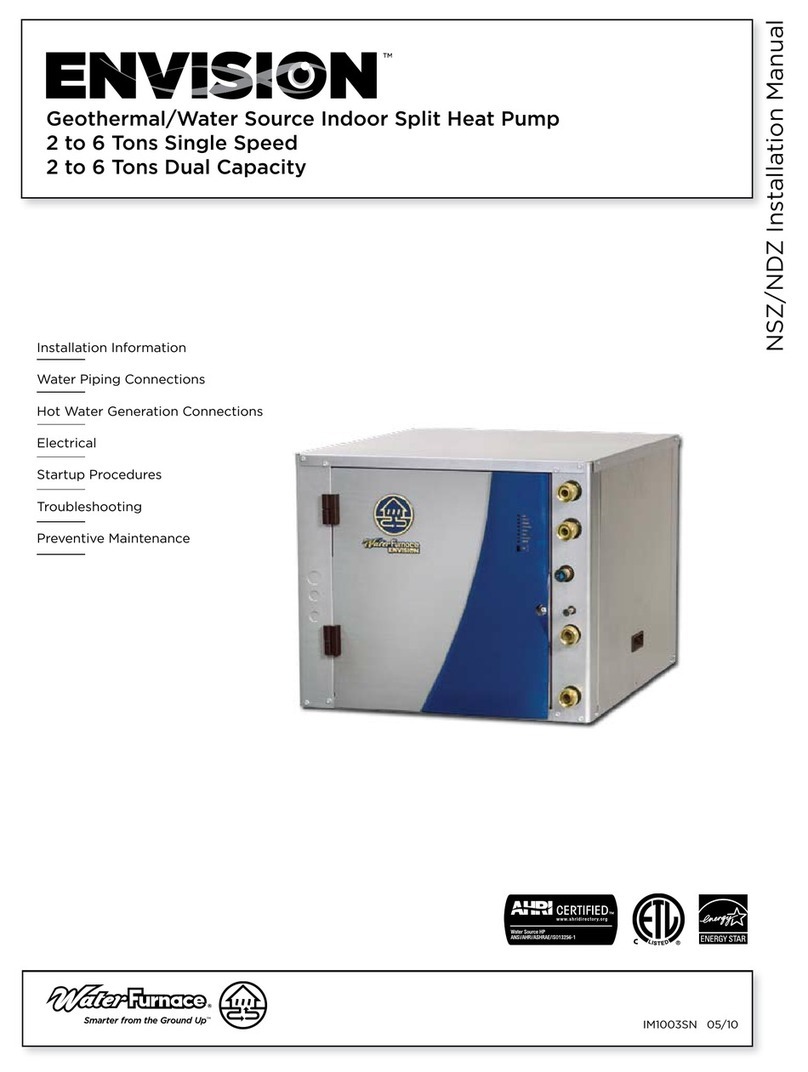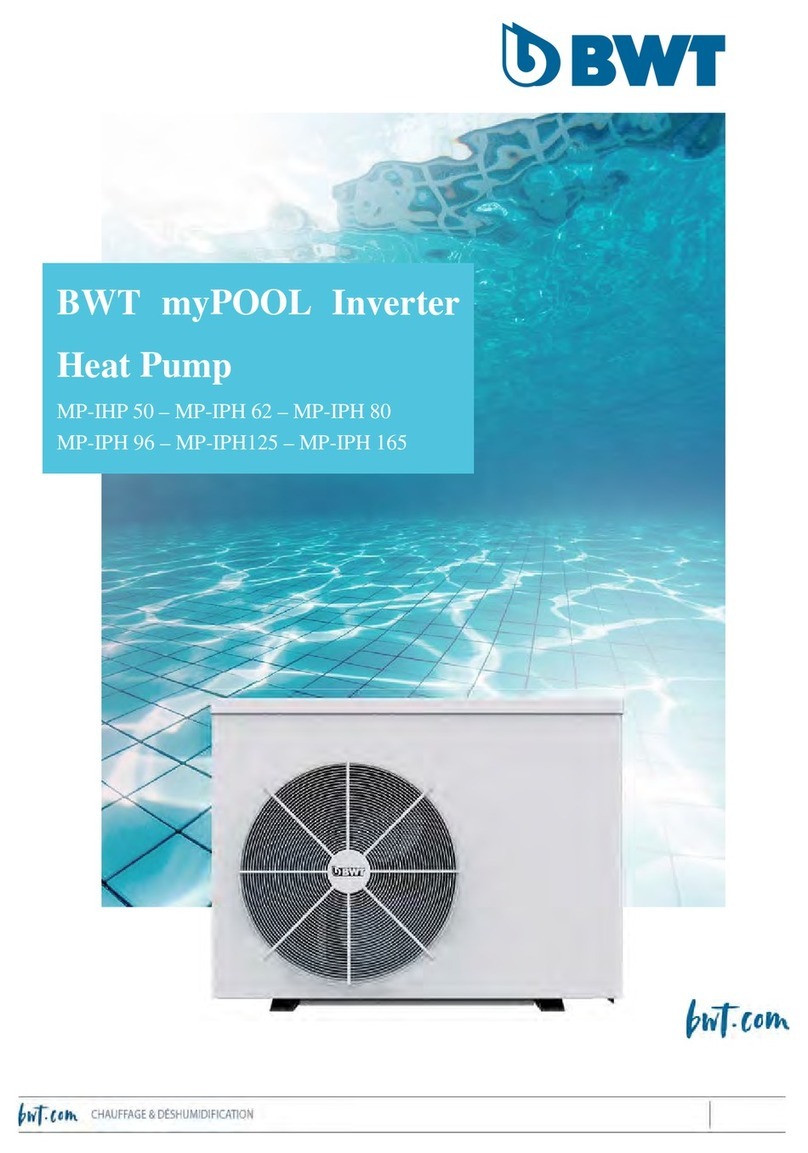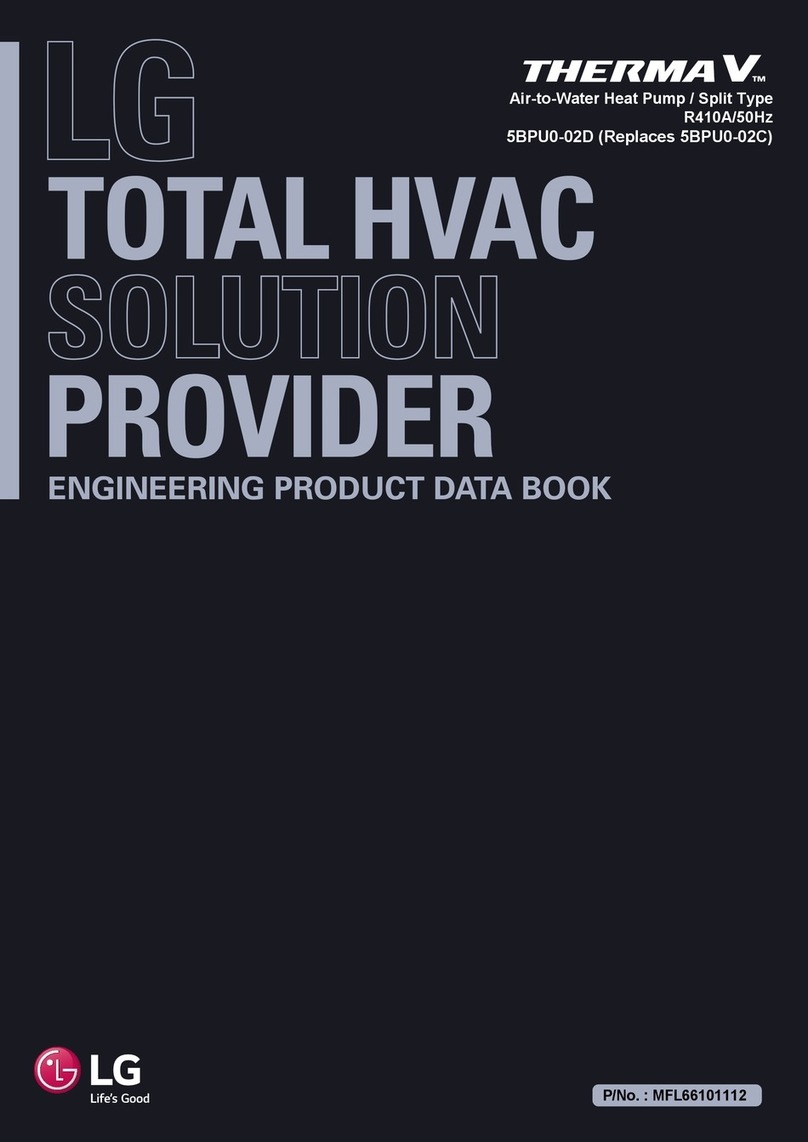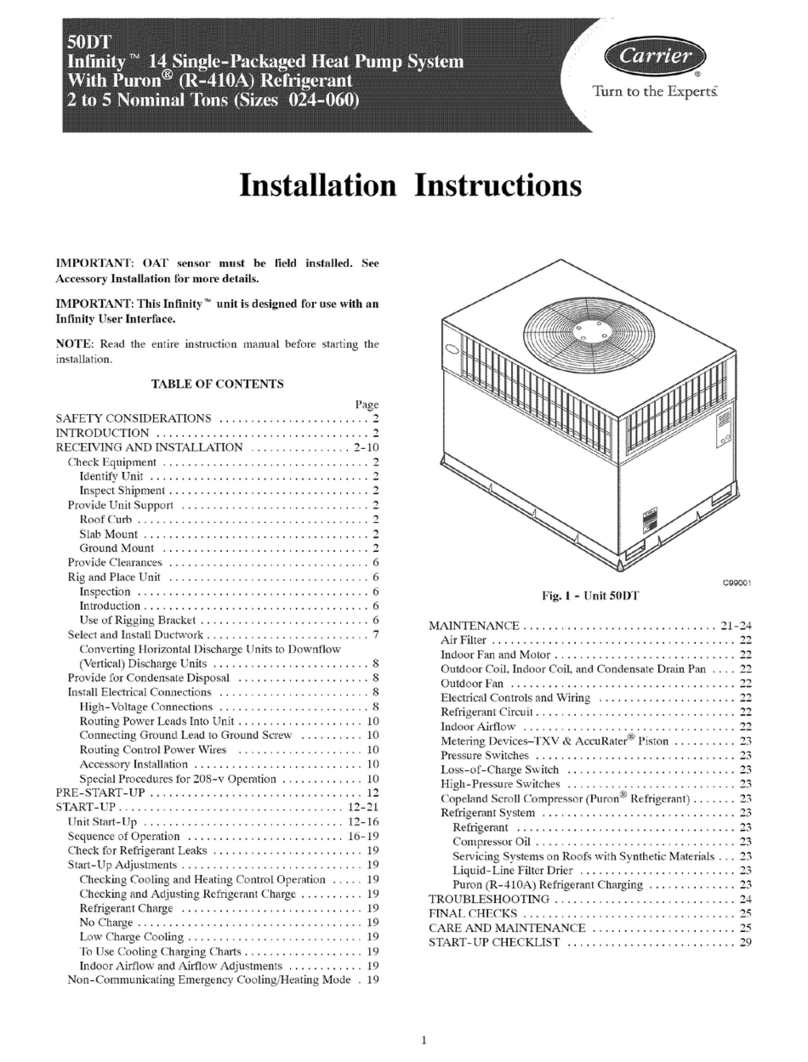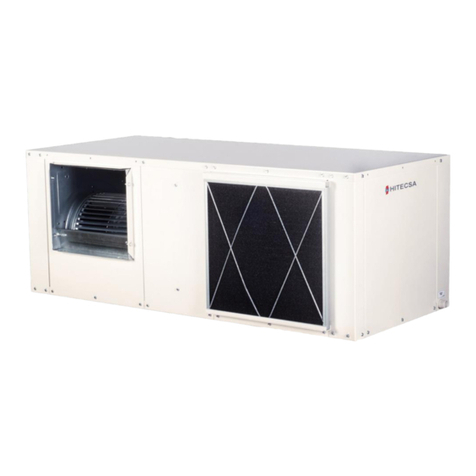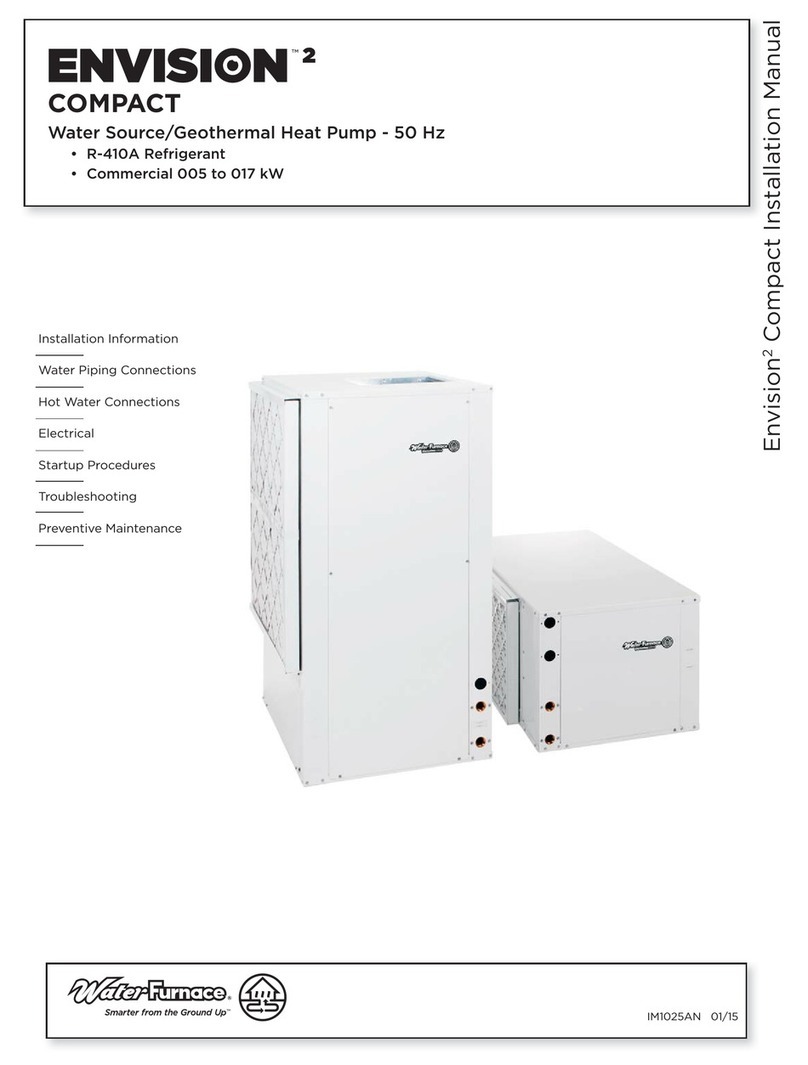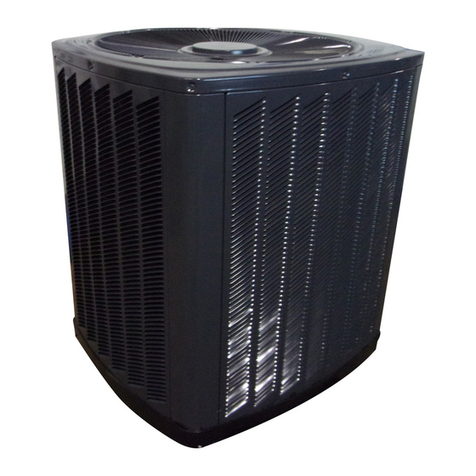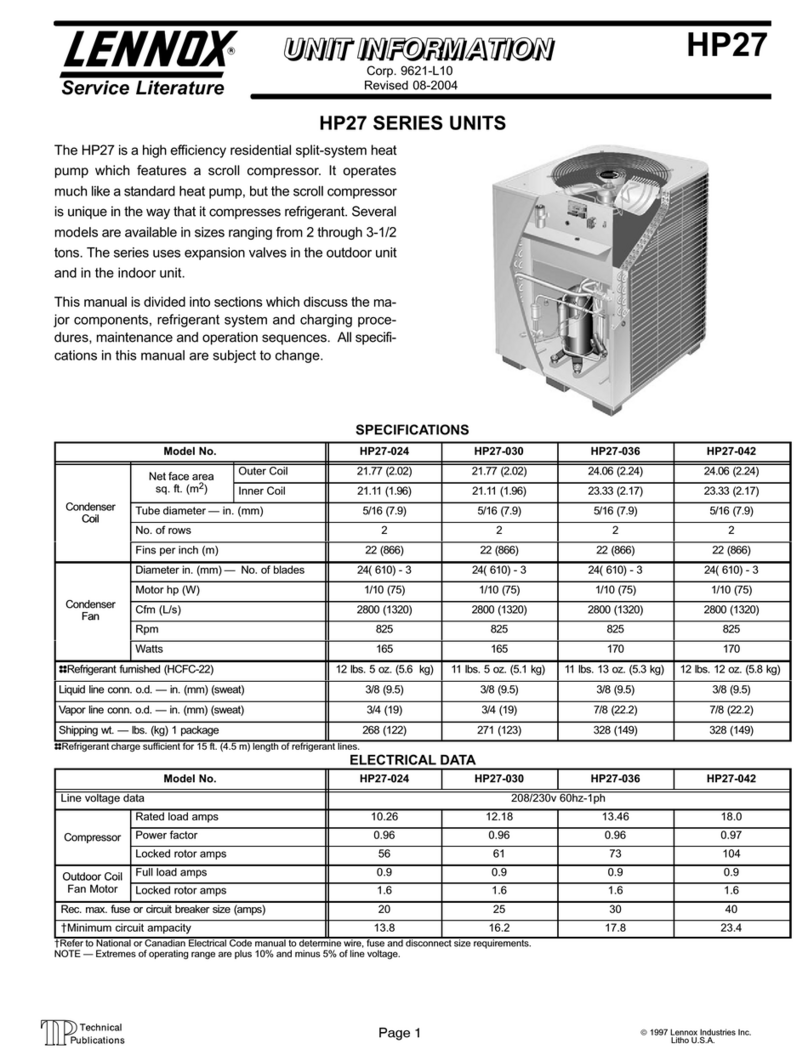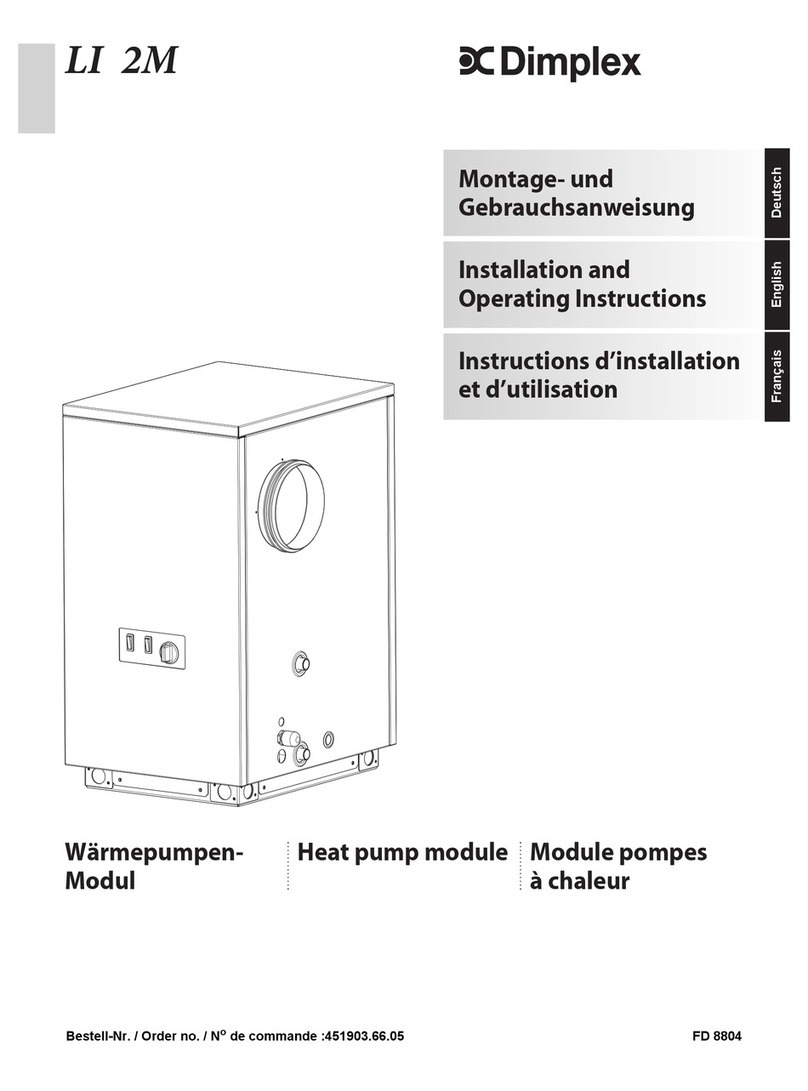
8
3 SERIES 300A11 INSTALLATION MANUAL
thread the female locking ring onto the pipe threads, while
maintaining the brass connector in the desired direction.
Tighten the connectors by hand, then gently snug the
fitting with pliers to provide a leak-proof joint. When
connecting to an open loop (ground water) system, thread
any 1-inch MPT fitting (SCH80 PVC or copper) into the
swivel connector and tighten in the same manner as noted
above. The open and closed loop piping system should
include pressure/temperature taps for serviceability.
Never use flexible hoses smaller than 1-inch inside diameter
on the unit. Limit hose length to 10 feet per connection.
Check carefully for water leaks.
Duct System
An air outlet collar is provided on vertical top air discharge
units and all horizontal units to facilitate a duct connection.
A flexible connector is recommended for discharge
and return air duct connections on metal duct systems.
Uninsulated duct should be insulated with a minimum of
1-inch duct insulation. Application of the unit to uninsulated
ductwork in an unconditioned space is not recommended
as the unit’s performance will be adversely affected.
If the unit is connected to existing ductwork, check the duct
system to ensure that it has the capacity to accommodate
the air required for the unit application. If the duct is too
small, as in the replacement of heating only systems, larger
ductwork should be installed. All existing ductwork should
be checked for leaks and repaired if necessary.
The duct system should be sized to handle the design
airflow quietly and efficiently. To maximize sound
attenuation of the unit blower, the supply and return
plenums should include an internal duct liner of fiberglass
or constructed of ductboard for the first few feet. On
systems employing a sheet metal duct system, canvas
connectors should be used between the unit and the
ductwork. If air noise or excessive airflow is a problem, the
blower speed can be changed.
Water Piping
The proper water flow must be provided to each unit
whenever the unit operates. To assure proper flow, use
pressure/temperature ports to determine the flow rate.
These ports should be located at the supply and return
water connections on the unit. The proper flow rate cannot
be accurately set without measuring the water pressure
drop through the refrigerant-to-water heat exchanger.
All source water connections on residential units are swivel
piping fittings (see Figure 4) that accept a 1-inch male pipe
thread (MPT). The swivel connector has a rubber gasket
seal similar to a rubber hose gasket, which when mated
to the flush end of any 1-inch threaded pipe provides a
leak-free seal without the need for thread sealing tape
or compound. Check to ensure that the rubber seal is in
the swivel connector prior to attempting any connection.
The rubber seals are shipped attached to the waterline.
To make the connection to a ground loop system, mate
the brass connector (supplied in CK4LI connector kit)
against the rubber gasket in the swivel connector and
Figure 4: Swivel Connections
Locking
Ring
Stainless
Steel
Snap Ring
Gasket
Support
Sleeve
Gasket
Material
General Installation Information cont.
Water Quality
In ground water situations where scaling could be heavy
or where biological growth such as iron bacteria will be
present, a closed loop system is recommended. The heat
exchanger coils in ground water systems may, over a period
of time, lose heat exchange capabilities due to a buildup
of mineral deposits inside. These can be cleaned, but only
by a qualified service mechanic, as special solutions and
pumping equipment are required. Hot water generator coils
can likewise become scaled and possibly plugged. In areas
with extremely hard water, the owner should be informed
that the heat exchanger may require occasional flushing.
Units with cupronickel heat exchangers are recommended
for open loop applications due to the increased resistance
to build-up and corrosion, along with reduced wear caused
by acid cleaning. Failure to adhere to the guidelines in the
water quality table could result in the loss of warranty.
CAUTION: When attaching ductwork or
accessories to the cabinet, make sure the
fasteners do not come into contact with the
air coil.






















